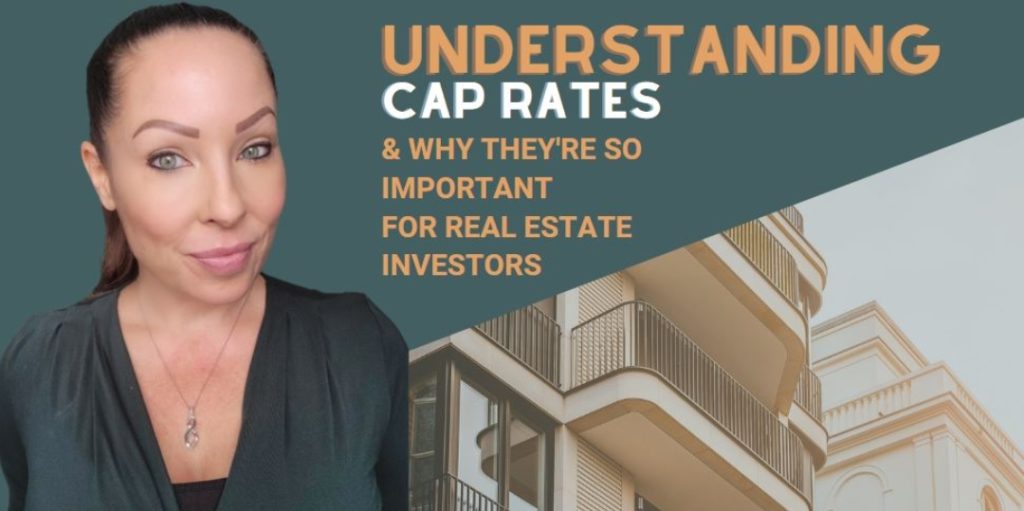
Understanding Cap Rates and Why They Are Important
Understanding cap rates is a critical skill new real estate investors need to learn. Real estate investors have to consider a wide range of factors when deciding to purchase a property. One of the most critical factors that investors must analyze is the capitalization rate, or cap rate for short. The cap rate is a measure of a property’s income-generating potential. They provide an estimate of the rate of return that investors can expect to earn from a particular investment.
So, what is the cap rate, and how is it calculated? Understanding cap rates is ultimately making sense of the ratio between the net operating income (NOI) of a property to its current market value. The NOI is the income that a property generates after deducting all operating expenses, such as property taxes, insurance, and maintenance costs. The formula for calculating the cap rate is as follows:
Cap Rate = NOI / Property Value
For example, if a property has a NOI of $100,000 and a market value of $1 million, the cap rate would be 10% ($100,000 / $1 million).
Understanding cap rates is a critical metric for real estate investors because it helps them determine the potential return on their investment. A higher cap rate indicates a higher rate of return, which is generally more attractive to investors. However, a higher cap rate may also indicate that the property is in a less desirable location or may require significant repairs or renovations.
Conversely, a lower cap rate may indicate a more desirable property with less risk but a lower potential return on investment. Ultimately, the cap rate should be considered in conjunction with other factors, such as location, vacancy rates, tenant quality, and future growth potential, when evaluating a property.
Areas with higher cap rates may yield higher cash flow, but that can potentially mean less opportunities for appreciation. You’ll find this to be commonplace throughout the east coast, the prairies in Canada as well as Texas and other states in the mid-west for example.
Investors can use the cap rate to compare different investment opportunities and make informed decisions about where to allocate their capital. For example, an investor may choose to invest in a property with a higher cap rate, even if it requires more repairs, because the potential return is greater. Alternatively, an investor may choose a property with a lower cap rate because it is in a more desirable location or has a stronger tenant base.
Furthermore, the cap rate can also help investors determine the price they should offer for a property. By understanding cap rates of other properties in the area and knowing a property’s NOI, investors can estimate the fair market value of a property and make a competitive offer.
Cap rates, or capitalization rates, are an important metric for real estate investors when evaluating potential investment opportunities. Cap rates provide an estimate of a property’s potential return on investment, and can be used to compare the relative value of different properties.
The cap rate is calculated by dividing the net operating income (NOI) of a property by its current market value. The net operating income is the property’s annual income minus its operating expenses, such as property taxes, insurance, maintenance costs, and property management fees. The current market value of the property is determined by recent sales of similar properties in the same market.
For example, if a property has an annual NOI of $50,000 and a market value of $1 million, the cap rate would be calculated as follows:
Cap Rate = NOI / Market Value
Cap Rate = $50,000 / $1,000,000
Cap Rate = 0.05 or 5%
A cap rate of 5% means that the property is expected to generate a return of 5% on the initial investment, assuming that the property is purchased entirely with cash and has no mortgage payments.
Cap rates are important for several reasons. First, they provide a simple and consistent way to compare the relative value of different investment properties. For example, a property with a higher cap rate is generally considered to be a better investment than a property with a lower cap rate, all else being equal.
Second, cap rates can help investors assess the risk associated with a particular investment. A higher cap rate may indicate a higher level of risk, such as a property in a less desirable location or with higher operating expenses. A lower cap rate may indicate a lower level of risk, such as a property in a desirable location with strong tenant demand.
Third, cap rates can help investors determine the potential for appreciation in property values. As cap rates decrease, property values generally increase, indicating a stronger demand for investment properties in that market. Conversely, as cap rates increase, property values generally decrease, indicating potentially a weaker demand for them.
It’s worth noting that the cap rate is just one of many metrics that real estate investors should consider when evaluating a potential investment. Other metrics, such as cash flow, internal rate of return (IRR), and return on investment (ROI), are also essential factors to consider. However, understanding cap rates is an excellent starting point for evaluating an investment. This can help investors quickly eliminate properties that do not meet their investment criteria.
In conclusion, the cap rate is a crucial metric for real estate investors, providing a quick and easy way to evaluate a property’s potential return on investment. By using the cap rate, investors can compare different investment opportunities and make informed decisions about where to allocate their capital. While the cap rate is just one of many factors to consider, it provides an essential starting point for evaluating a property’s investment potential.
Are you interested in real estate investing but have questions? Let’s talk! I can be reached at 647.896.6584, by email at info@serenaholmesrealtor.com or by filling in this simple contact form.
For other great info and tips, make sure we’re connected on social @serenaholmesrealtor and you’ve subscribed to my YouTube Channel.










